When we popped in to visit the Old Napier Hill Cemetery on Tuesday we were amazed at the changes that we observed from one visit, one season to another. Clearly there has been lots of clearing and weed whacking going on up here through the winter. This early spring it all seemed limited and modest and rather erratic, not nearly as pretty and exuberant as in the past. But I guess it's a good thing that there is curation going on at all. There was no sign of the swan plant family and all the roses had been hard pruned so at least they will be back again very soon. There is now loads of lavender and rosemary well established which is appropriate and suitable for the space.
Cistus and Breath of Heaven does well here too.
Daisies and osteospermums also thrive in the harsh cemetery conditions.
I'm so glad this angel still stands- apparently she also watches over road crossing ducks.
This lump of land that was long ago designated for burying the dead is still as steep as it ever was, just like the other spot where they made the prison. In spotting this vibrant pelargonium I realise that most of the pelargoniums and geraniums have been removed that we found here 5 or so years ago.
It's understandable that there's a random contingent of caretakers and not much coordination. When the council guys turn up it's to weed control and hack back. So much of what remains is probably survival of the fittest and those that missed the blade.
There are some graves that whanau or family come to care for, but not many.
This old leathery euphorbia is a hard doer, but it lights up the place in spring.
Life was so different back when this space was set aside to bury the dead, in a town comprising some large rocky lumps (not really hills) surrounded by swathes of water. Then came the 1931 earthquake which redefined Napier as it is now.
Some of the graves are now well over a hundred years old so it's not surpising that there's subsidence showing.
Opportunistic wild onion.
Lovely to see a couple of patches of bluebells. This is Annie's grave. We've picnicked with her before.No one will ever keep up with this cemetery, which is what gives it the magic of all things random and wild.
A pretty, slender shrub- not atually sure what it is.
Right beside the Lych Gate House (shelter) is a lovely patch of sweet violets that have been flowering for months now.
Blue and white Cuban lilies thrive up here. The conditions suit them perfectly.
So very English seeing the grave edifices draped with ivy.
On this visit we quite quickly ran out of pretty things to see so we wandered off the beaten track and nearly slipped down the hill on the carpet of small acorns & gum nuts.I wonder how much has been lost to time that we will never now see in it's original glory.
Being early spring with many of the trees still without leaves the lower terraces opened up to us in a new way. We marvelled at the ingenuity that was involved in constructing all of these graves and structures and adornments back in a time when there were no concrete mixing trucks and the intricate metal panels of this resting place came all the way up from Dunedin!I guess they imagined that if they used a lot of concrete then nobody would get washed down the hill. I'm not sure that is guaranteed any more.
Under all this dietrius are brick steps that end on the edge of a sheer cliff! Imagine losing control of the coffin on the way down!
I started off saying that this was a photographic essay as I didn't think I had much to say. Clearly that wasn't quite true. Never-the-less the pictures speak to this unusual and precious wild space.
And the truth is- it really has become a wilderness unto itself.
It's one of the scariest places I've been in ages (not because of the residents) but because I kept thinking that one of us might slide over the precipice at any moment!
At least if you slid this way you'd have a good chance of hanging on to the ivy ropes. I guess ivy networks must also hold this inhospitable part of the cemetery together.
There's quite a methodical system of pathways & steps up & down. They're just a bit dishevelled & obscure these days & covered over with composting leaves, seeds & other plant droppings. Oak leaves themselves take an absolute age to break down.
English ivy & periwinkle mingle in this unmowable landscape- both resilient & robust & so ideal really.
Periwinkle contain with in their blooms fairy toothbrushes, so perhaps they are perfect for those who dwell here.
Imagine lying here for over a century- what changes must have occured all around you & with in the city below.
Maybe they even brought in the those early prisoners to help pour all this concrete.
And of course, just up the road Napier hospital was opened in 1880. Many who travelled to the ends of the earth are buried here.
The Old Napier Hill Cemetery adjoins the Botanical gardens- 17.3 hectares that were set aside by the government surveyor Alfred Domett in 1855. The site was regarded as unpromising at the time! But is now beautifully curated & interesting.



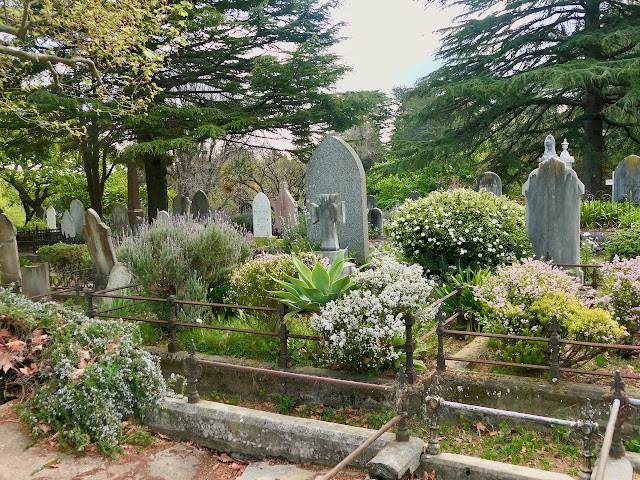
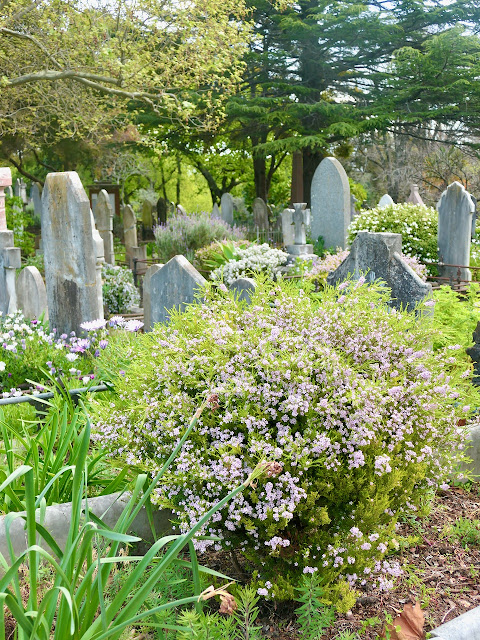










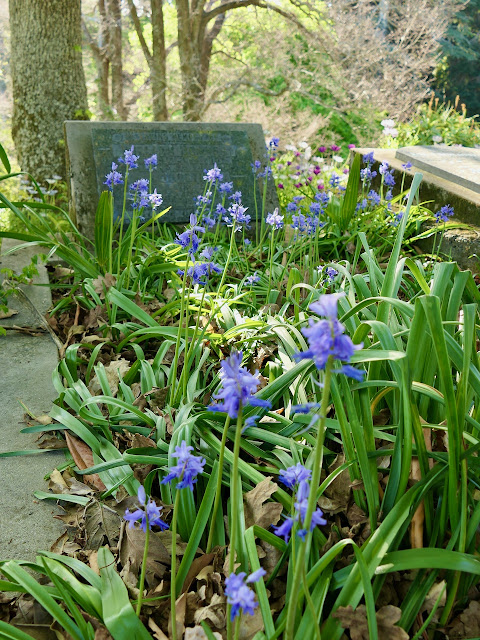







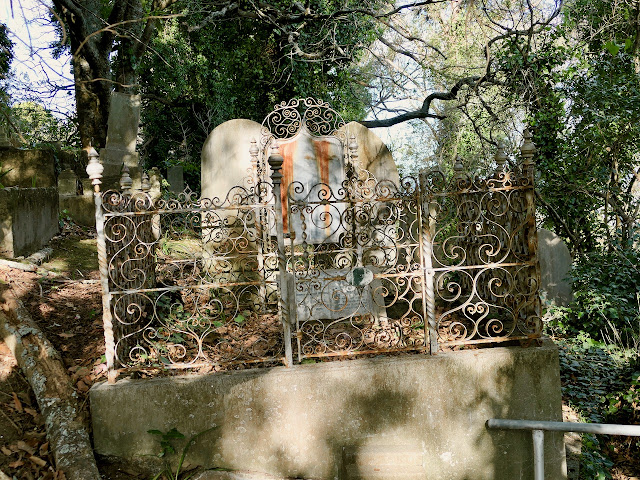






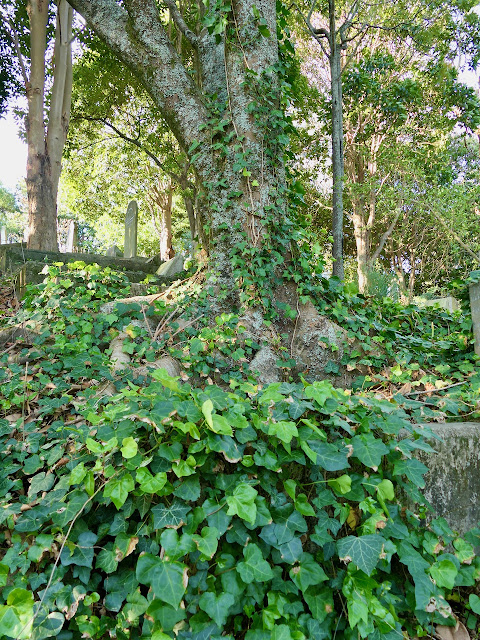




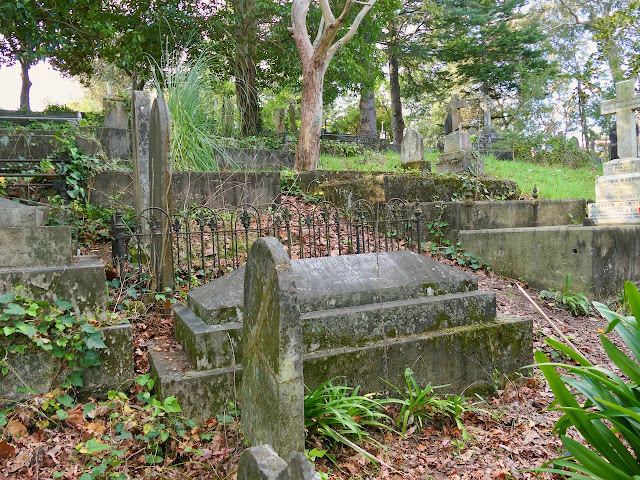









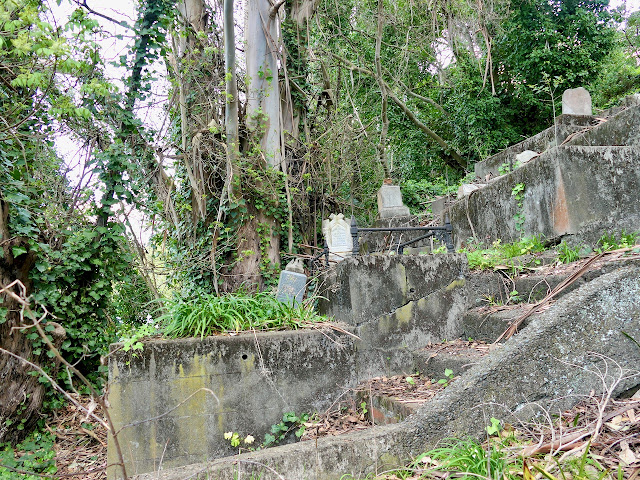





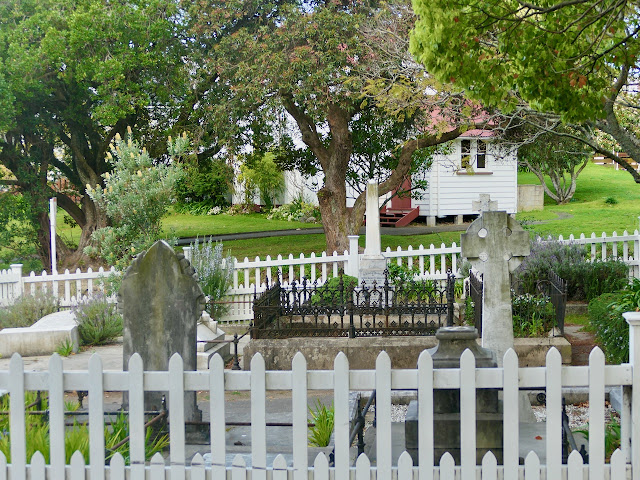
.jpg)

.jpeg)


